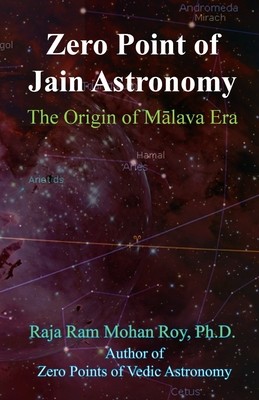
- We will send in 10–14 business days.
- Author: Raja Ram Mohan Roy
- Publisher: Mount Meru Publishing
- ISBN-10: 1988207223
- ISBN-13: 9781988207223
- Format: 14 x 21.6 x 0.9 cm, softcover
- Language: English
- SAVE -10% with code: EXTRA
Reviews
Description
Jain astronomy provides an important link between Vedic astronomy and classical Hindu astronomy. Jain texts such as Jambudvipaprajnapti, Suryaprajnapti, and Chandraprajnapti have detailed information on the apparent motion of sun, moon, planets, and stars. In this book, important features of Jain astronomy have been discussed and compared with Vedic astronomy and classical Hindu astronomy. The principle behind the division of sky in nakshatras has been explained and the span of nakshatras in Jain astronomy has been calculated. Based on the changing position of sun in the background of stars during solstices and equinoxes, the date of the astronomical observations described in Jain texts has been estimated. It is proposed that the zero point of Jain astronomy as well as Malava era coincides with the yogatara of Ashwini, Hamal, being at vernal equinox in 702 BCE.
- Author: Raja Ram Mohan Roy
- Publisher: Mount Meru Publishing
- ISBN-10: 1988207223
- ISBN-13: 9781988207223
- Format: 14 x 21.6 x 0.9 cm, softcover
- Language: English English
Jain astronomy provides an important link between Vedic astronomy and classical Hindu astronomy. Jain texts such as Jambudvipaprajnapti, Suryaprajnapti, and Chandraprajnapti have detailed information on the apparent motion of sun, moon, planets, and stars. In this book, important features of Jain astronomy have been discussed and compared with Vedic astronomy and classical Hindu astronomy. The principle behind the division of sky in nakshatras has been explained and the span of nakshatras in Jain astronomy has been calculated. Based on the changing position of sun in the background of stars during solstices and equinoxes, the date of the astronomical observations described in Jain texts has been estimated. It is proposed that the zero point of Jain astronomy as well as Malava era coincides with the yogatara of Ashwini, Hamal, being at vernal equinox in 702 BCE.


Reviews